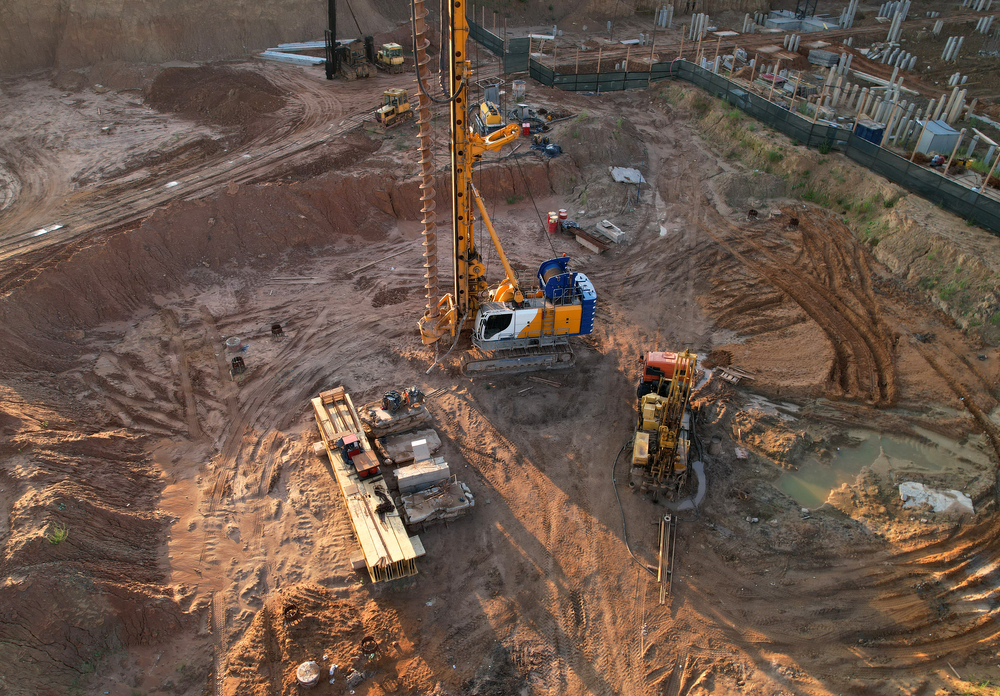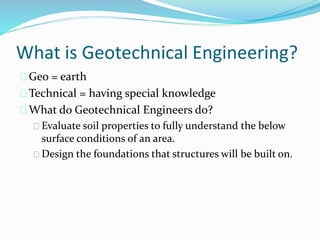Geotheta for Beginners
Geotheta for Beginners
Blog Article
Unknown Facts About Geotheta
Table of ContentsThe 45-Second Trick For GeothetaThe Buzz on GeothetaAbout GeothetaThe Geotheta PDFs
They collaborate with civil engineers, architectural designers, engineers, and various other experts to integrate geotechnical factors to consider right into the overall project design and building procedure. This needs efficient teamwork, control, and interaction to guarantee that the geotechnical facets line up with the project objectives and satisfy regulative needs.Mining & Materials Design: Principles of boring, infiltration prices, and variables influencing the option of drilling technique. Blowing up techniques in surface and below ground workings. Mechanical and continual methods to fragmentation, consisting of longwall shearing and fullface boring.
Modelling of piece and bit size distributions; comminution as a transfer feature. Comminution innovation: crushing, grinding, size classification. Integrated analysis of fragmentation and comminution procedures. Supplied by: Mining & Materials Design.
Fascination About Geotheta
Bachelor's level programs in civil, geotechnical, geological, and ecological engineering usually last four years and consist of basic education training courses in English, social science, and the humanities, along with programs in advanced mathematics, structural geology, and fluid mineralogy. (https://realistic-swam-lvtf1k.mystrikingly.com/blog/unlocking-the-secrets-of-geotechnical-engineers-the-geotheta-advantage)
Geotechnical engineering involves the analysis of the soil and rock conditions at a specific website, and their implications for the development of that website. As a lot of structures rely upon the ground for support, it lacks surprise that a thorough understanding of the ground conditions, and the suitability of structure systems, are essential to the long-term security and performance of the building or structure.
Being experts in the examination of geological formations and ground behaviour, geotechnical engineers execute scientific investigations and testing to understand the effect these geological formations may carry the style and building and construction of building, civil and infrastructure tasks. This knowledge is critical for the design and construction of buildings, roads, passages, dams, bridges, and water and sewer system.
The geotechnical team at Douglas Partners regularly talk to engineers, style designers, programmers, and builders to make recommendations on style and development proposals to make certain that the built structures are accordingly created for the ground problems. The layout of footing systems requires to consider the weight of the structure, the capability of the ground to sustain that weight with each other with movement tolerances and reliable construction.
Geotheta - An Overview
This job is substantially streamlined by the use our Douglas Map geospatial system that makes this details easily available in a very easy to utilize internet internet browser user interface. A geotechnical designer will certainly guide the exploration of boreholes and test pits to collect dirt and various other examples, and also examine surface attributes and ground exposures to create a geotechnical model of the subsurface problems.
Relying on the project kind and ground conditions ran into, laboratory testing may among various other things examine toughness, compressibility, reactivity and/or leaks in the structure of soil and rock examples. Hereafter information is accumulated and collated, the outcomes are utilized for a geotechnical design of the site, which is generally provided as areas throughout the site.

A geotechnical examination by nature can only examine the ground conditions at the places pierced or dug deep into. Natural variants in dirt and rock problems can occur throughout a website and in between examination areas. It is as a result excellent technique that the geotechnical engineer be maintained throughout building of the project to give on-site confirmation that the ground conditions experienced follow the assumptions and suggestions provided in the geotechnical investigation record.
The 4-Minute Rule for Geotheta
Geotechnical designers utilize their extensive knowledge of soil and rock to evaluate danger and address troubles on diverse facilities projectsGeotechnical design is a specialist branch of civil design which considers the practices of planet materials and the application of dirt and rock technicians. Tailings Engineer. As a geotechnical engineer, you will evaluate the physical, mechanical and chemical properties of dirt and rock in order to develop foundations, keeping frameworks and earthworks
Geotechnical engineering is closely linked to and overlaps with, both design geology and ground engineering - http://prsync.com/geotheta/. It's feasible to specialise in geotechnics or help a geotechnical firm yet be referred to as a design geologist or a ground engineer. As a geotechnical designer, you'll need to: construct and maintain partnerships with customers and various other experts associated with the site, throughout each projectmaintain security standards on website bear in mind price effects when you make recommendationsstudy geological maps and airborne photos from a variety of sources and from different time periodsexamine construction prepares to see just how feasible they are based upon your understanding of the siteinvestigate risks or geological dangers for the sitesearch for environmentally delicate functions, such as landfill begin to develop accurate and expository ground modelsplan field investigationsdrill and analyse samples of bedrock, soil, groundwater and additional products oversee other experts on sitesolve technological problems as they arise, such as unexpected frameworks at drill sitesmonitor problems throughout and after building and construction to make certain structures are stable in the brief and lengthy termadding information gathered on site to your preliminary researchcreating geotechnical computations, illustrations, and two or three-dimensional computer system designs analyzing the datamaking suggestions concerning the proposed use of the site

Report this page